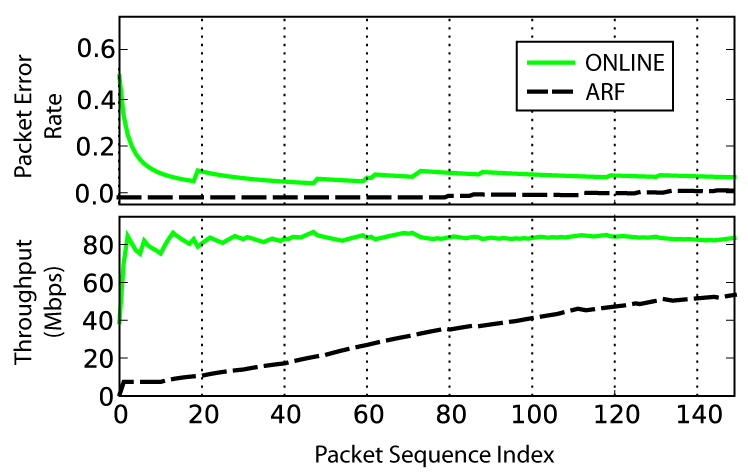Algorithms Adapt Via Machine Learning
Post on: 16 Март, 2015 No Comment

February 5, 2013
 
Although algorithmic trading is a form of automated trading, it hasn’t reached the point where humans can be totally disengaged.
On the contrary, the more we rely on systems to make trading decisions, the more human oversight is needed to make sure they’re performing as intended, as the widely-publicized trading glitches of the past year have made only too clear.
Kevin Covington. chief executive, ITRS Group
As with all black box processes, it is assumed that the algorithms are going to be working correctly and dont develop erroneous scenarios,” said Kevin Covington, chief executive of ITRS Group, a provider of software for monitoring trading applications and infrastructure.
“As Nassim Nicholas Taleb said in his various books, such as the Black Swan, everyone just accepted that trading algorithms worked in all cases,” he said. “And it is now clear that they do not. What you need is adaptive rules; i.e. you can’t rely on a completely ‘insulated’ black box. It needs to be open so you can see what’s going on.”
In practice, the buy side struggles to use broker algo suites to their fullest potential.
“Traders generally use around 20% of the algos at their disposal, leading to adverse selection that can negatively impact trading performance,” said Alfred Eskandar, chief executive of trading systems provider Portware. “Even if traders use all algos properly, they simply aren’t capable of ensuring that every order is in the right strategy at the right time, all the time.”
The Human Element
The consensus view is that machines can adapt, and can be useful as trading assistants, but we aren’t near the point where they will displace human traders, chiefly because they lack the intuition and insight that humans possess.
“If we want to optimize a trading strategy going forward, at a bare minimum we’re going to want to see that output,” said Ben Sylvester, head of JPMorgan Asset Management’s U.S. equity trading group.
“Whether we react to it, it can be left to the trader’s discretion,” said Sylvester. “I think it is going to be immensely powerful. Our next-gen trading workstation will involve a component of that—we’ve built it in a modular format and machine learning will be one of the modules.”
Noted John Bates, chief technology officer at software provider Progress Software: “I still believe that the human trader is a critical piece of the puzzle. A machine learning system may spot complex patterns—but these need validating.”
The human will evolve further to be the ‘validator’ (or not) of AI strategies, Bates said. “Upon validation, the strategy could be automatically started up,” he said. “However, without validation, it’s possible that something could be overlooked—perhaps there is a naive error—that might cause massive losses. So people are here to stay, at least for now.”
In what sense, then, can artificial intelligence be thought of as making algorithms adaptive?
For an AI trading algorithm to be adaptive, it has to be based on the machine learning model that allows incremental learning.

Often, the objective of the algo creators is to give higher priority to the most recent data, and therefore the model should be designed to allow weighted incremental learning, i.e. the latest knowledge has higher impact on the present performance.
“AI is seen as adaptive through trade opportunities, where models and patterns are built from post-trade data that help in recognizing gaps in real-time market data that offer execution, bids or cancels in a real-time environment,” said Dan Watkins, director of business development at Perseus Telecom, a provider of trading connectivity. “If a substantial amount of past data can be properly recorded and analyzed quickly, then theoretically a model can be built to predict future events.”
Self-Learning Mechanisms
Machine learning techniques “utilize feedback loops to adapt”, said Jon DiGiambattista, capital markets expert at predictive analytics provider Opera Solutions. “This built-in self-learning mechanism allows the algorithms to stay current with the short-term fluctuations in market conditions and behaviors.”
Traditional algorithms tend to be based on a static set of parameters that are generated and validated via some sort of historical back-testing process.
Though they can work well in isolated regimes, if there is some sort of shift in circumstances, then they may become less effective.
“Some notion of being consistently calibrated to the market becomes key,” said Tim Grant, chief executive of Benchmark Solutions, a provider of streaming market data. “One of the only ways to achieve this kind of dynamic calibration is through machine-learning techniques.”
NeuroDimesnions, a provider of neural network-based trading software, recalibrates the neural network weights using the most recent data.
“If the market conditions change over time then the model will adapt to those changing conditions,” said Gary Lynn, chief executive of NeuroDimension. “This re-tuning process can be done regularly, or only after the model begins to underperform.
Trading systems must adapt continuously “to spot new opportunities, tune strategies to these opportunities so we can move on them first and then spot when they go away or become over-mined”, said Bates of Progress Software. “Machine learning is another tool in this cycle,” he said. “It potentially offers the ability to spot new trading opportunities and make new recommendations by ‘learning’. It can also potentially tell you when these opportunities are becoming less effective or need tuning. So systems can adapt and tune themselves.”














